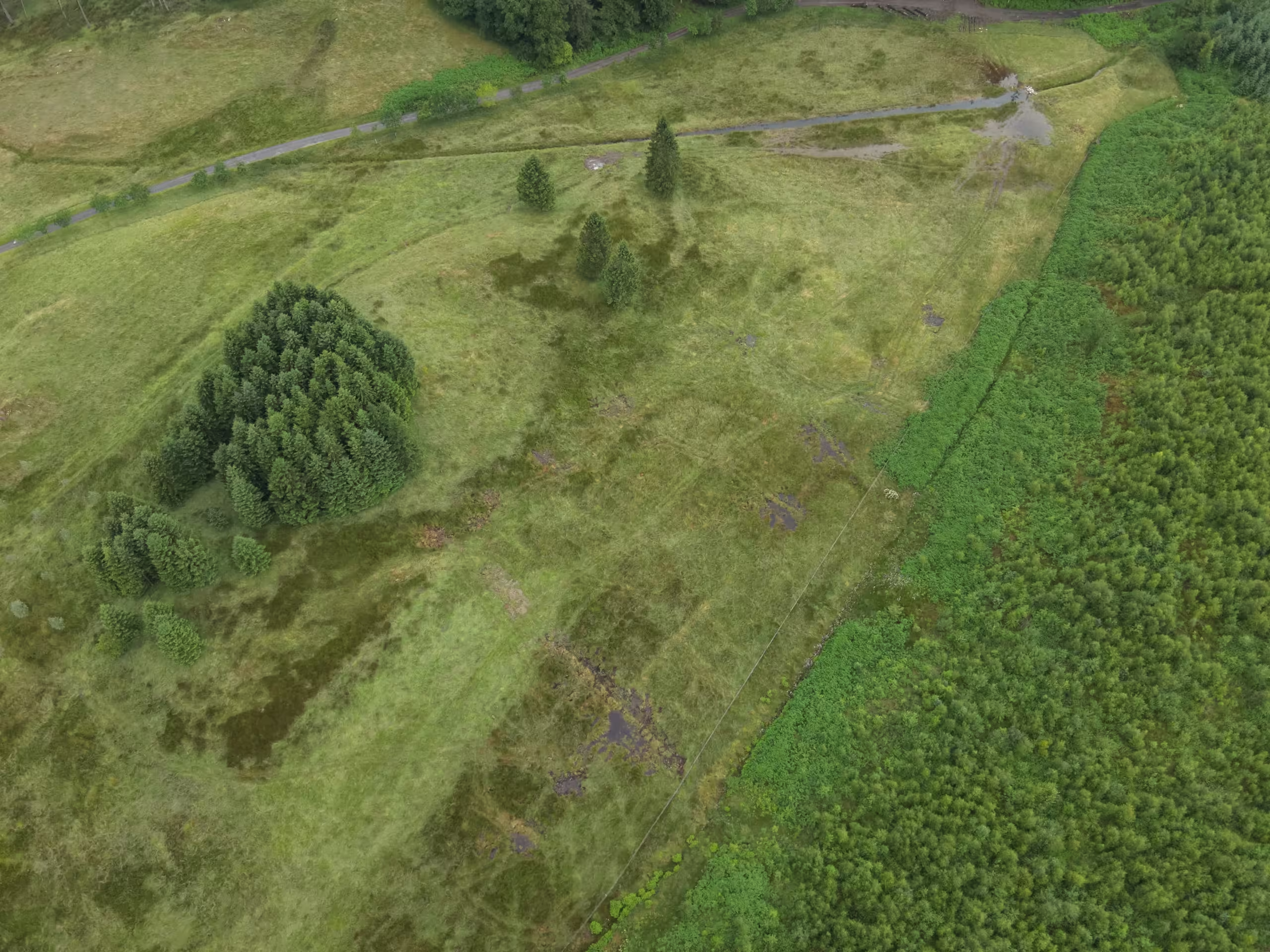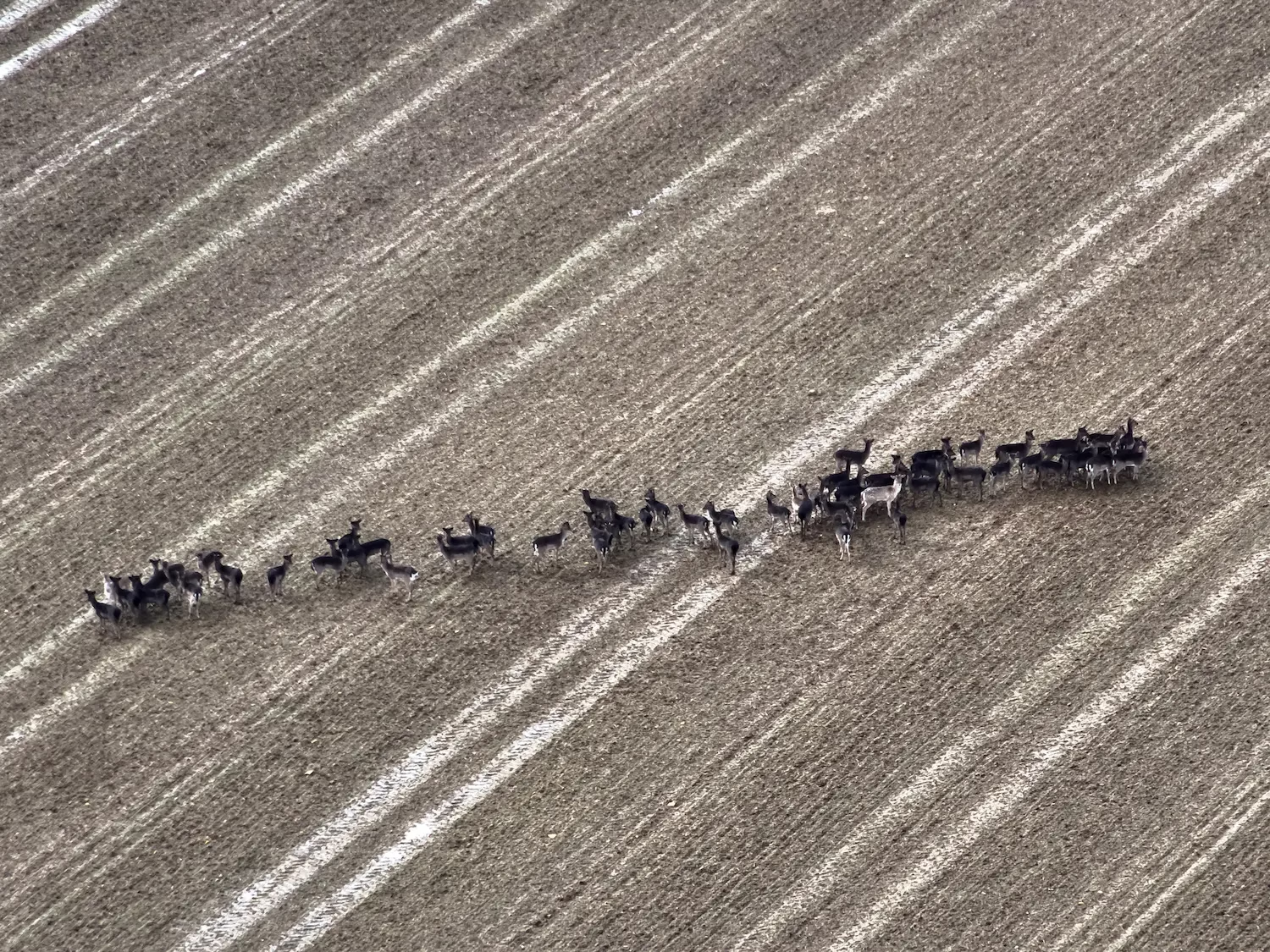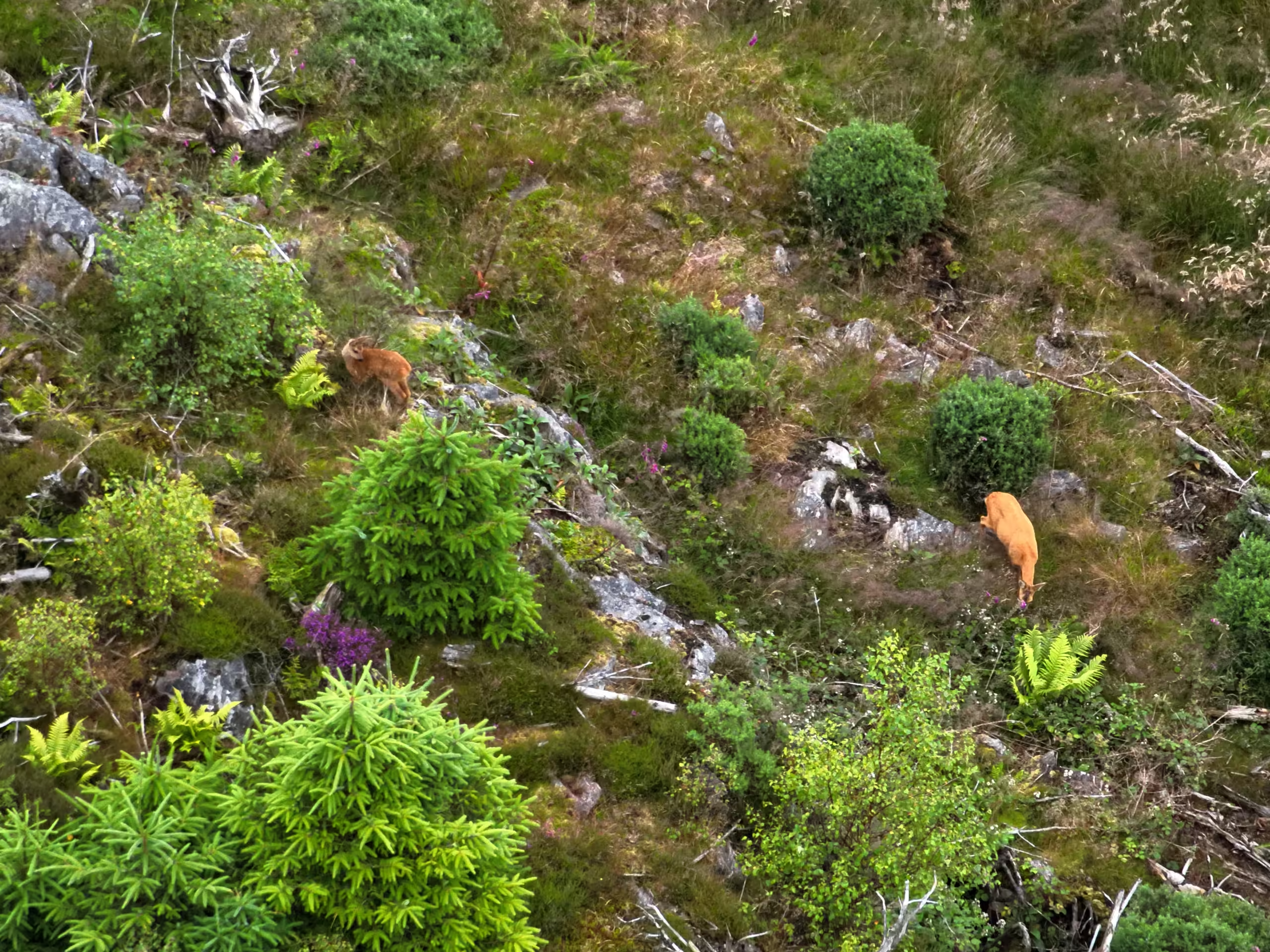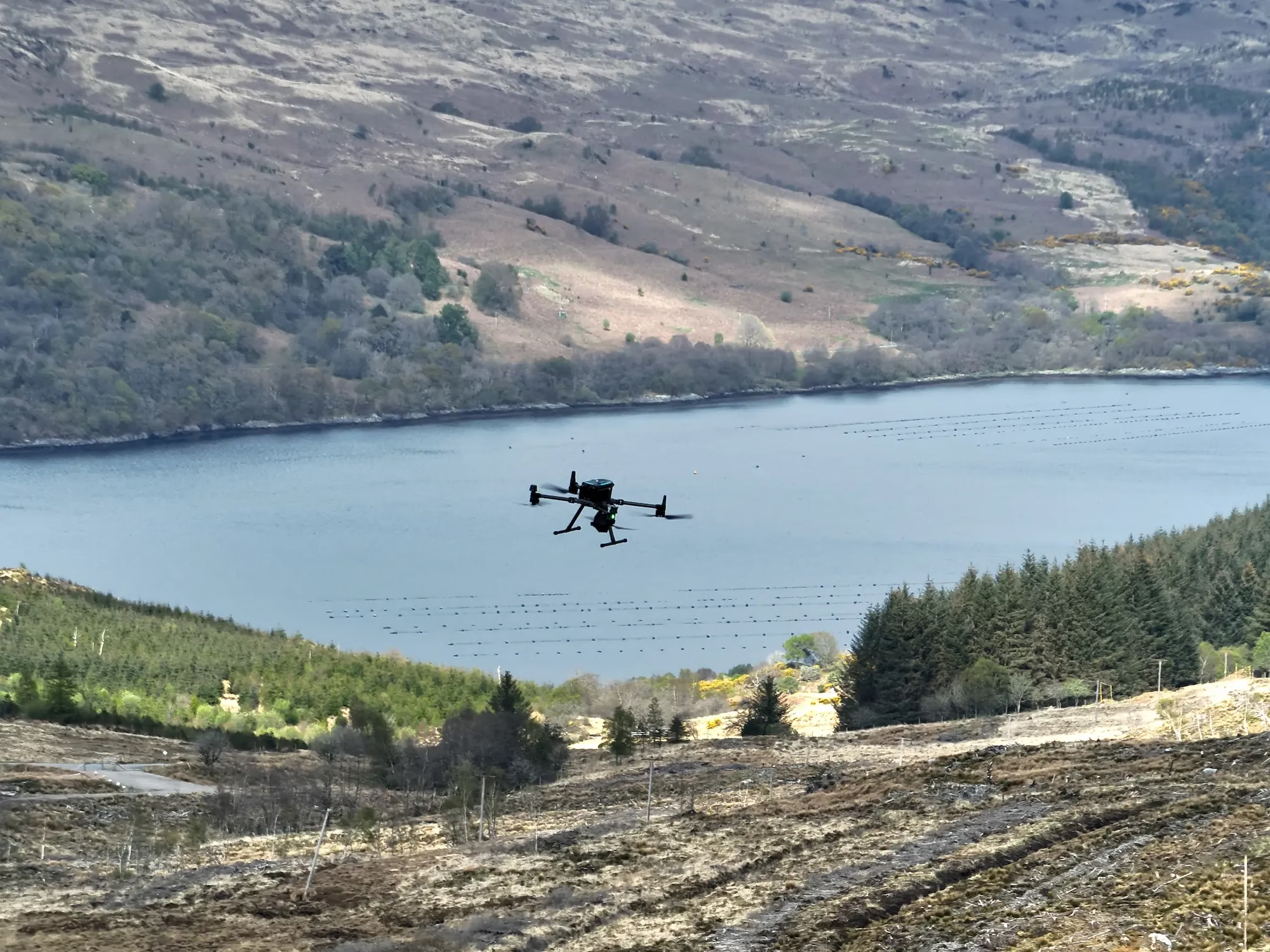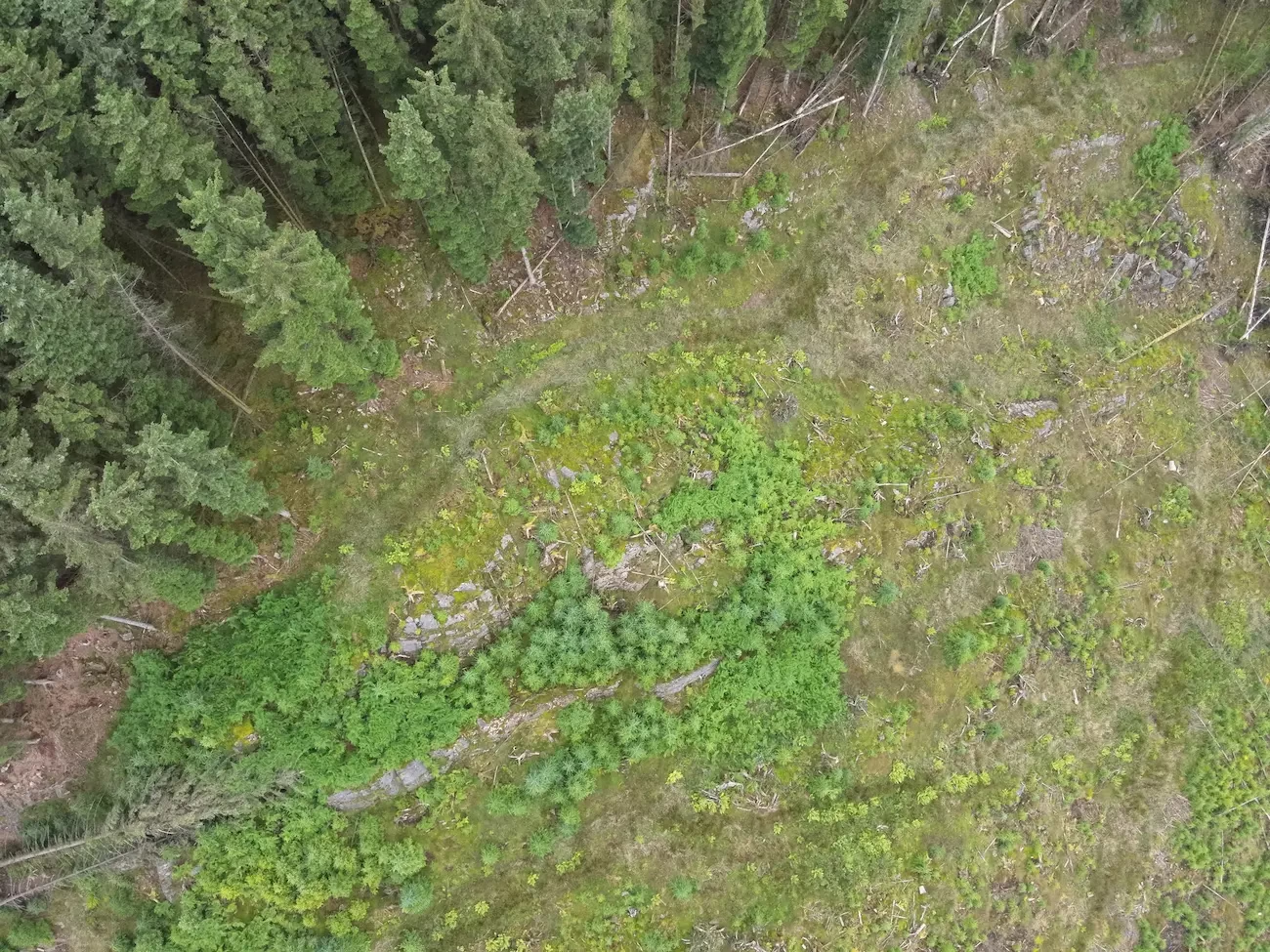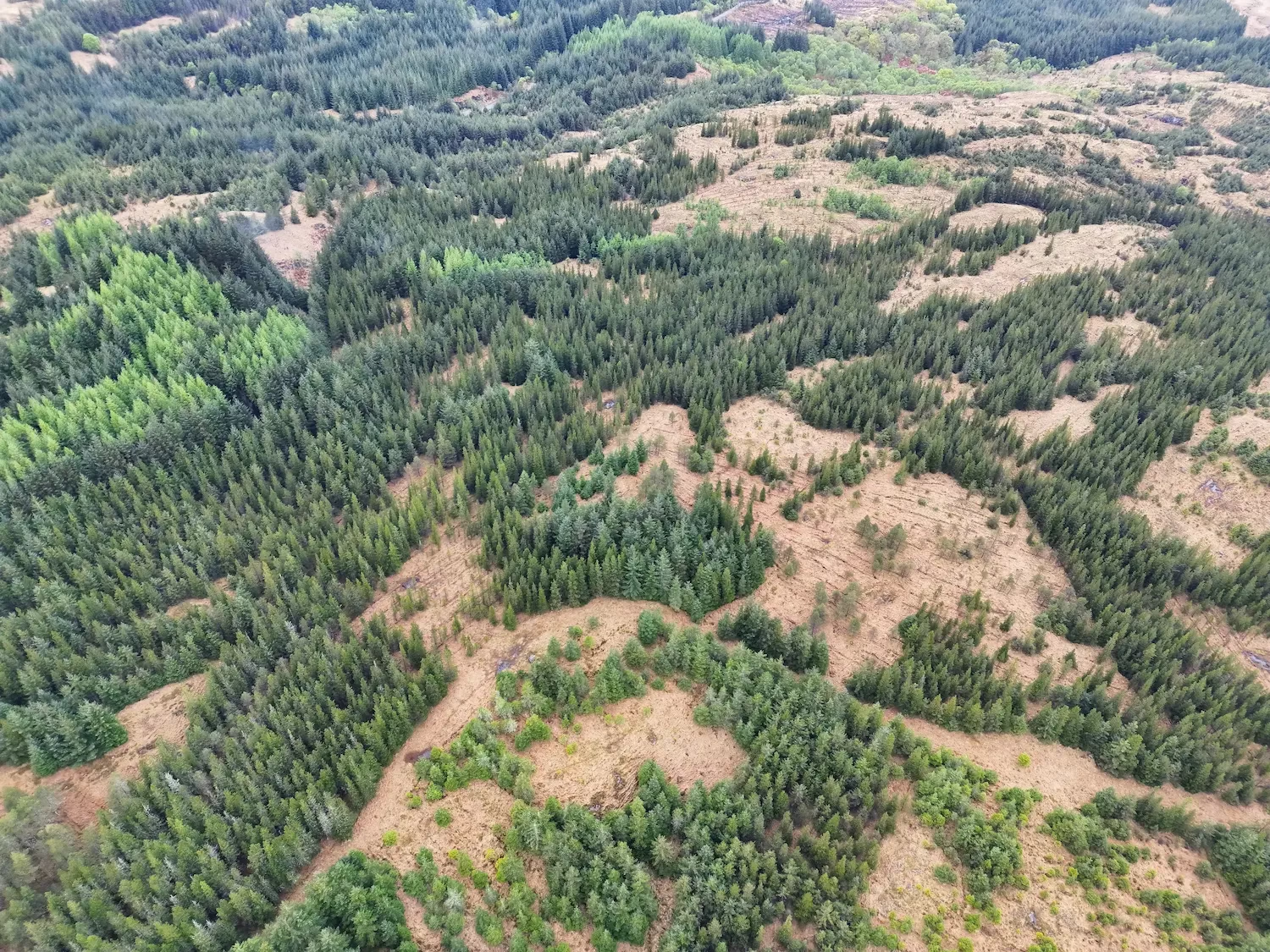As rewilding gains momentum across the UK, drone seeding is emerging as a promising method for restoring habitats and regenerating biodiversity. While still in development and trial phases in many regions, this innovative approach uses precision drone technology to plant seeds across hard-to-reach or sensitive landscapes.
Applications range from reforesting uplands and stabilising soil to early-stage interventions such as seeding cover crops that support long-term habitat recovery. In sensitive environments like peatlands, the use of drones to sow seeds avoids the need for heavy machinery and reduces disturbance. In this blog, we’ll explore how drone seed systems function, where they’re being used, and how Boddy Environmental Ltd. plans to offer this technology through new drone seeding projects.
What Is Drone Seeding and Why Does It Matter?
Drone seeding is the process of using unmanned aerial vehicles (UAVs)to distribute tree seeds, cover crop seeds, and native vegetation mixes across landscapes in need of ecological restoration. These agriculture UAV drones are equipped with dispenser units to release pellets or loose seed while flying metres above the ground.
This shift from manual replanting to direct seeding allows us to reach sloped, boggy, or remote areas where manual planting by people would be unsafe or impractical.
Traditional methods of ecological restoration often rely on intensive labour and machinery, which can damage fragile soil structures and impact the success rate of planted trees.
With the use of drone technology, seeds can be scattered safely and efficiently across conservation trial sites, helping to overcome the challenges of difficult terrain and reducing reliance on heavy machinery.
How Drone Seeding Supports Rewilding and Ecological Restoration
Rewilding is about letting nature take the lead—but sometimes, it needs a head start. In heavily deforested or degraded areas, drone seeding accelerates habitat restoration by introducing native tree species and ground cover that supports wider ecosystem recovery.
In recent UK drone seeding projects—such as those trialled in Devon and Cornwall—UAVs have seeded 11 hectares of land, dropping 58kg of seeds across former woodland zones. These seeds included native birch, wild cherry, and other tree species once common across the British Isles. The goal is to reverse this destruction and support the expansion of the UK’s remaining temperate rainforests, such as those found in parts of western Scotland and Cornwall, within their original range.
Drone seeding also plays a major role in peatland restoration UK projects. By carefully distributing moisture-loving plants across fragile landscapes without disturbing the peat, this approach helps to stabilise soil, store carbon, and restore hydrological balance—key steps to meeting nature restoration regulation targets.
Environmental Benefits of Drone Planting and Seed Delivery
Drone planting brings a wide range of ecological advantages, particularly when used in rewilding and restoration initiatives. These benefits go beyond just speed and scale; drone planting helps us apply modern technology in practical ways to support natural systems, making it easier to restore damaged landscapes while minimising disruption.
- Precision seeding: Delivers seed mixes directly to priority areas with minimal soil disturbance, helping to reduce erosion, improve seed germination rates, and support forest and habitat recovery.
- Biodiversity support: Encourages native ground cover, supporting insects, pollinators, and wildlife habitats.
- Expanded land access: Enables coverage of remote or difficult terrain more efficiently than manual methods.
- Lower carbon impact: Replaces heavy ground-based machinery with lightweight UAVs, helping to reduce carbon emissions.
- System integration: Easily connects existing drones and farming technologies such as aerial mapping tools, GIS platforms, and precision agriculture systems, making it easier to plan, execute, and scale restoration projects efficiently.
- Data-driven monitoring: Uses tools like aerial photogrammetry to track planted trees, survival rates, and project success over time.
As restoration efforts grow in ambition and scale, these environmental benefits make drone planting a vital part of the rewilding toolkit—seamlessly connecting technology with nature to prepare for the next stage: the operational process behind every successful drone seeding project.
How the Drone Seeding Process Works
Drone seeding isn’t just about scattering seeds from the sky—it’s a precise, step-by-step process designed to maximise ecological impact and efficiency. Here’s how a typical drone seeding project is carried out:
- Site Analysis & Mapping: The process begins with the use of drones for surveying to collect terrain and vegetation data. Aerial photogrammetry is employed to generate digital elevation models (DEMs) and habitat maps.
- Seed Mix Selection: Based on the mapping data, environmental specialists determine the most appropriate seed mixes for the site—whether it’s tree seeds for forestry restoration or cover crop blends to stabilise degraded soil.
- Flight Path Planning: Flight paths are carefully programmed into agriculture UAV drones, taking into account altitude, slope, and seed density to ensure thorough and consistent coverage across the target landscape.
- Seeding Execution: UAVs operate at low altitudes—typically just a few metres above the ground—distributing seed via custom-built spreader units designed for precision delivery. In many cases, seeds are pellet-coated to improve delivery consistency and protect them from wind, moisture loss, and predation — enhancing germination success.
- Post-Seeding Monitoring: After the seeding phase, additional drone flights or on-the-ground checks assess progress, allowing project managers to track seed germination, vegetation growth, and success rate over time.
This streamlined approach not only ensures high efficiency and precision but also positions drone seeding as a valuable tool in modern ecological restoration, conservation and land use planning.
Forestry, Farming, and UK Temperate Rainforest Reforestation
Drone seeding’s versatility makes it well suited to both ecological restoration and land-based industries like farming and forestry. In fact, many of the tools and technologies originally developed for agriculture—such as precision seeding, GPS guidance, and variable-rate dispersal—are now being adapted to support nature recovery at scale.
Reforesting the UK’s uplands and restoring areas of temperate rainforest is a major national climate objective. Drone planting seeds is now a recognised technique for establishing native tree species in sensitive or difficult-to-reach areas. While these drones were first used in farming, Boddy Environmental repurposes them for ecological goals—restoring degraded woodlands, regenerating peatlands, and supporting long-term biodiversity across the British landscape.
Coming Soon: Drone Seeding Services from Boddy Environmental
Boddy Environmental Ltd. is expanding its environmental offering to include drone planting and drone spraying and seeding services for habitat restoration and sustainable land management. These services are designed to support:
- Peatland restoration UK initiatives where traditional access is limited
- Reforestation with drones in upland, sloped, or degraded woodland areas
- Strategic cover crop deployment for soil stabilisation and early-stage restoration
- Projects that align with nature restoration regulation goals in the UK
Using advanced drones for surveying, GIS mapping, aerial photogrammetry, and thermal imaging, we provide end-to-end support—from site analysis and seed mix planning to aerial dispersal and long-term monitoring. Our agriculture UAV drone platforms ensure high precision, even in challenging terrain.
Whether you’re restoring temperate rainforests, managing farmland with biodiversity goals, or planning a custom rewilding project, Boddy Environmental’s drone-based services offer a scalable, eco-friendly solution tailored to your restoration needs.
Conclusion: The Future of Habitat Recovery Lies in the Sky
With biodiversity under pressure and carbon emissions rising, scalable solutions like drone seeding are crucial. By combining modern UAV systems with ecological insight, we can restore landscapes, improve soil health, and create more resilient ecosystems.
To find out how Boddy Environmental can support your next drone seed or reforestation project, contact us today.
Together, we can help conservation efforts to reverse this destruction—one seed at a time.
